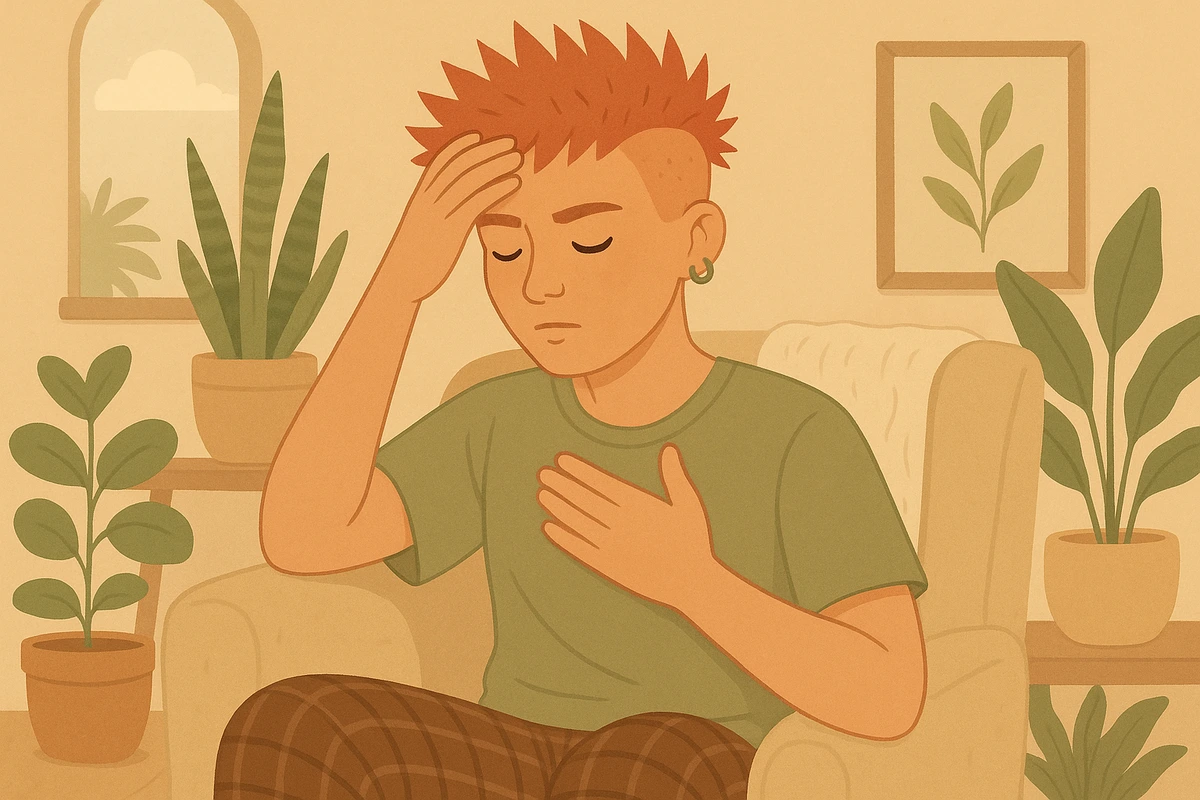Recognizing anxiety versus panic involves distinguishing between persistent worry and tension (anxiety) versus sudden intense fear episodes (panic), enabling targeted coping strategies with 5-10 minutes of reflection.

Your heart races and your thoughts spiral, but you're not sure if this overwhelming feeling is "just anxiety" or something more intense. Many people use anxiety and panic interchangeably, missing crucial differences that could unlock more effective coping strategies and help predict how long these difficult feelings might last.
Recognizing anxiety versus panic transforms confusion during emotional distress into clear understanding that guides targeted intervention. This diagnostic awareness helps you choose appropriate coping strategies while reducing the secondary distress of not understanding what you're experiencing. Research demonstrates that accurate symptom identification significantly improves anxiety and panic management outcomes.
Recognizing anxiety versus panic operates through multiple interconnected psychological and physiological mechanisms that fundamentally improve emotional regulation and coping effectiveness. The core benefit stems from what anxiety researchers call "symptom specificity" - matching intervention strategies to specific symptom presentations for optimal effectiveness.
The technique leverages what psychologists term "interoceptive awareness" - consciousness of internal bodily sensations and emotional states that enables accurate self-assessment and appropriate response selection. Studies demonstrate that individuals with better interoceptive awareness show improved emotional regulation and reduced anxiety sensitivity.
One fundamental mechanism involves what researchers call "diagnostic clarity" - understanding the specific nature of emotional distress reduces the secondary anxiety that comes from uncertainty about internal experiences. This clarity often provides immediate emotional relief independent of specific coping strategies.
The practice works through what cognitive behavioral scientists call "treatment matching" - selecting interventions that correspond to specific symptom presentations. Anxiety typically responds better to cognitive strategies and gradual interventions, while panic requires immediate physiological regulation techniques.
Recognition skills build what researchers term "emotional granularity" - the ability to identify and articulate specific emotional experiences with precision. Clinical studies show that individuals with higher emotional granularity demonstrate better emotional regulation and treatment outcomes.
The framework addresses what anxiety specialists call "catastrophic misinterpretation" - when physical sensations are interpreted as signs of immediate danger rather than normal stress responses. Understanding the difference between anxiety and panic helps distinguish between uncomfortable but manageable anxiety versus intense but time-limited panic episodes.
From a neurobiological perspective, anxiety and panic activate different brain circuits and neurotransmitter systems, requiring different intervention approaches. Anxiety involves more cognitive brain regions, while panic activates primitive alarm systems requiring immediate physiological soothing.
Additionally, accurate recognition prevents what psychologists call "symptom escalation" - when inappropriate interventions for one type of distress accidentally worsen symptoms or create additional emotional problems.
"I can't tell the difference during intense episodes": This is common when emotions are overwhelming. Focus on building recognition skills during milder episodes first, then apply knowledge during more intense experiences as skills develop.
"My symptoms seem to combine anxiety and panic": Many people experience mixed presentations or transitions between anxiety and panic. Focus on identifying the predominant pattern and select interventions accordingly.
"I worry that focusing on symptoms makes them worse": Brief, objective symptom assessment typically reduces rather than increases distress by providing clarity and direction. If symptom focus increases anxiety, consider working with a mental health professional.
"My anxiety and panic don't match typical descriptions": Individual presentations vary significantly. Focus on identifying your personal patterns rather than matching textbook descriptions perfectly. Professional assessment can help clarify atypical presentations.
"I'm not sure if I should treat this as anxiety or panic": When uncertain, start with panic interventions (immediate grounding and breathing) which are safe for anxiety, then transition to anxiety strategies if symptoms persist.
"Recognition doesn't seem to help my symptoms": Accurate recognition is the first step but doesn't eliminate symptoms immediately. Combine recognition skills with appropriate coping strategies and consider professional support for persistent symptoms.